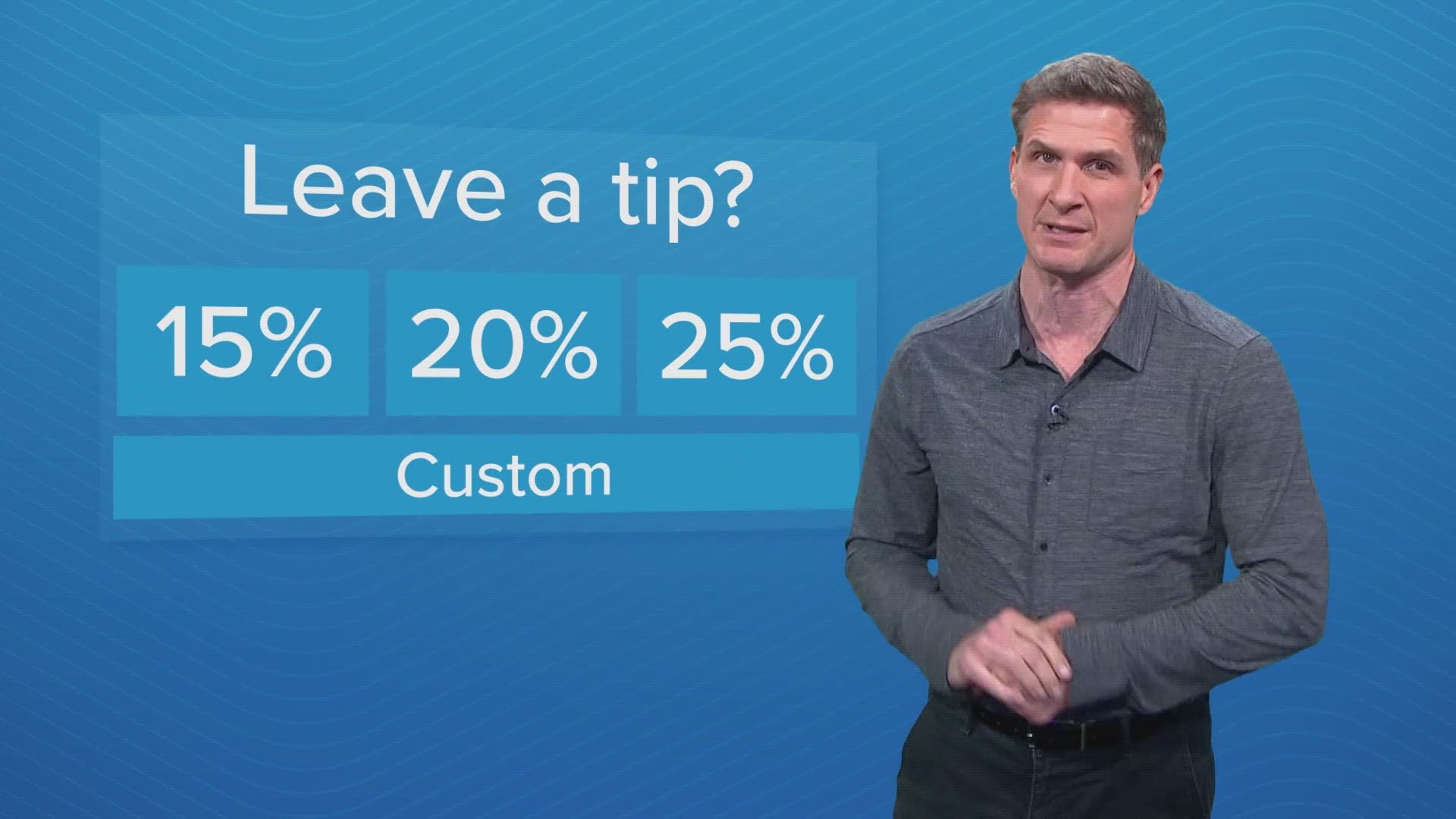DALLAS — Have you placed a tip jar on your desk yet? Why not? So many workplaces have done it.
Thirty-one percent of people surveyed by Forbes feel pressured by the process of tipping. Which means they are probably feeling pressured often these days.
Tip jars and tip screens and tip texts are popping up everywhere.
Who exactly am I tipping? And why?
A few examples: I was recently at a self-service kiosk where I was doing the labor and there wasn’t a worker present at all. Then, the gratuity screen popped up.
Who might I be tipping there? Myself? In that case, sure!
Also, I recently went to a restaurant where you seat yourself, scan a QR code for the menu then go to the counter to order. And then they give you a disk that lights up when it’s ready so you can come back to the counter to pick it up. The only thing someone did other than cook the food that I was already paying for was to hand me the screen so I could tap my card and choose my tipping option… while they watched, of course.
And 20% was the lowest option offered. You had to go through several awkward steps to not tip. I know that because I didn’t tip that time.
Because… for what exactly am I tipping?
'Tip fatigue' and the dreaded tip screen at the register
Fifty-one percent of people in another survey said they have been adding a gratuity when they normally wouldn’t just because they were presented a screen at checkout.
I used to wait tables and bartend. I am an over-tipper, but I have found myself nodding along with multiple recent reports that have popped up trying to make sense of the tipping craze, which has been called "tipflation," "tip creeping," "tip fatigue" and "guilt tipping."
The phenomenon of so many more workers now soliciting tips started with the pandemic, when we became more generous with gratuities and gave them to more types of workers. That caught on and never reverted to normal.
Also, businesses have warmed to the idea because that’s a portion of worker compensation they don’t have to pay.
But, Bankrate recently found almost two-thirds of respondents had negative feelings about tipping now. And they reported that "few topics elicit as many passionate opinions as tipping."
How generous (or not) are Texas tippers?
Only consumers in seven states are tipping less than Texans. This state comes in 43rd place for tipping percentage in a money.com survey of restaurant data from payment platform Toast.
And many workers in Texas rely on those tips -- perhaps more than their counterparts in other parts of the country.
That’s because many states mandate that employers of tipped workers pay them more than the minimum federal requirement of $2.13 per hour.
But Texas is one of 15 states that still allow employers to meet just that minimum federal rule of paying their workers $2.13 an hour, supplemented by tips.
But again, at many of the places where you are now being asked to add a gratuity, workers are making much more than $2.13 per hour.
So, who do you tip and how much? That is always a personal call.
But think about it because chances are if you are receiving any number of services, you will be asked to tip. If it helps, here is a guide. And here is another.
And this guide deals specifically with those sometimes awkward point of service tipping transactions, where the worker is face to face with the customer while they are entering the gratuity…or not.

